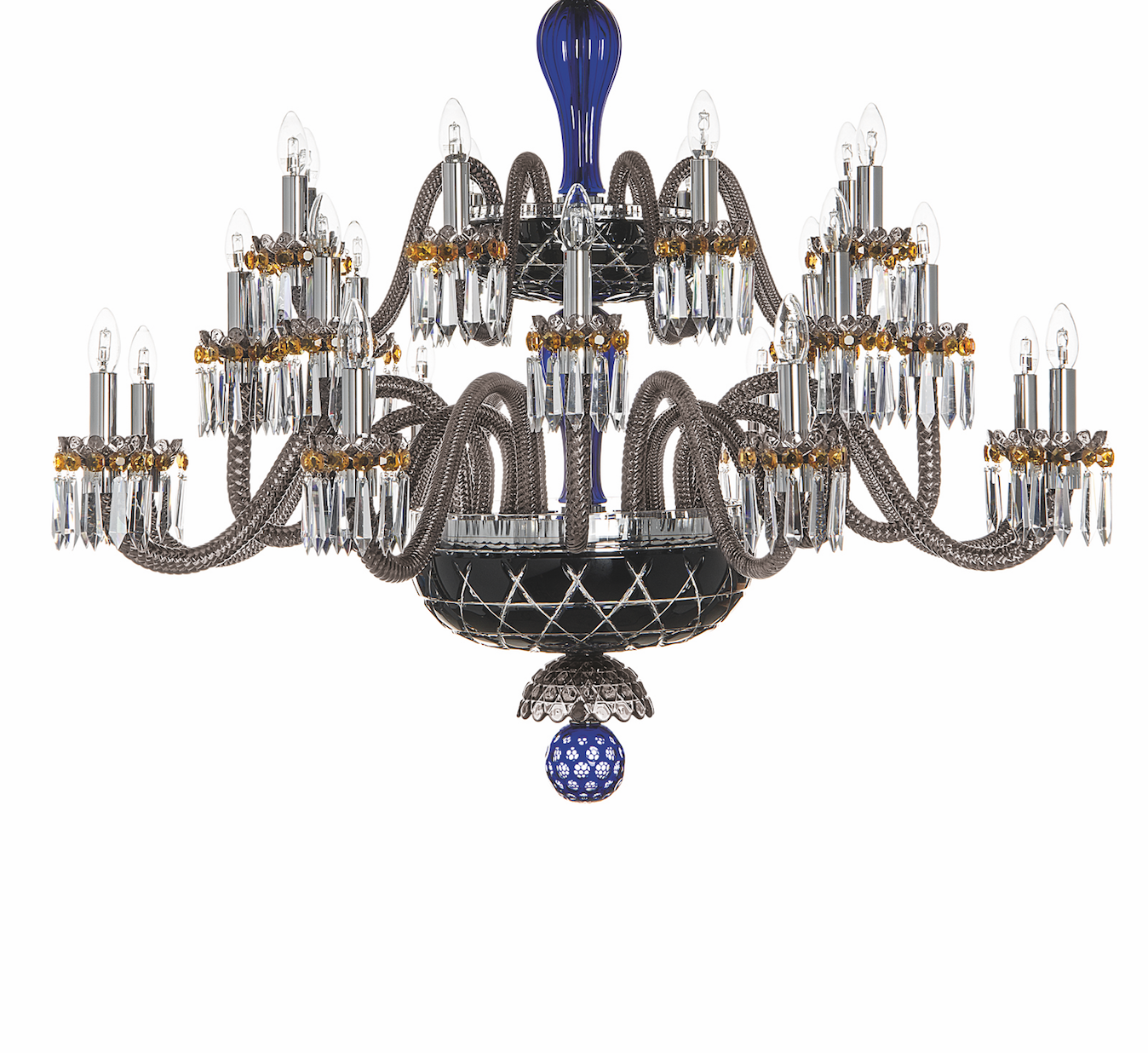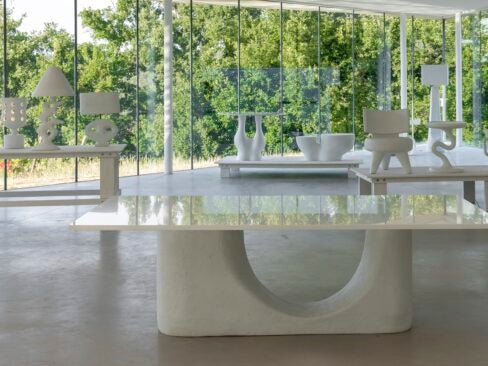 Surrounded by dense verdant forest in Saint-Louis-lès-Bitche, France, the Saint-Louis Glass Manufacture workshop has created exceptional handblown crystal since 1586.
Surrounded by dense verdant forest in Saint-Louis-lès-Bitche, France, the Saint-Louis Glass Manufacture workshop has created exceptional handblown crystal since 1586.
Back then, the remote location was paramount, as the furnaces required a huge and steady supply of wood to reach the temperature needed to melt sand into glass (around 3,632 degrees) as well as a source of water; it was piped from a nearby stream to cool the pieces so the glasscutters could carve their intricate designs.
Sand is also needed (but nothing like the sand you might see on the beach; instead, it is an ultrafine white grit) and potash, a substance that helps to melt the sand at a lower temperature. Both were sourced from the forest floor. These days, the furnaces are powered by natural gas and the potash is created in a lab, but the sand and water are still sourced from the forest just as they were 433 years ago.
To make the rainbow-refracting crystal, lead is added to the glass; Saint-Louis was the first manufacturer to perfect the crystal-making process in 1781 and also the first to create a crystal chandelier. We examine the painstaking process behind creating the Arlequin chandelier.
The hot workshop is the beating heart of the manufacture. It takes many years of training to master the fire and acquire the know-how needed to operate in this environment. The fire burns continuously, with the kilns in constant operation.
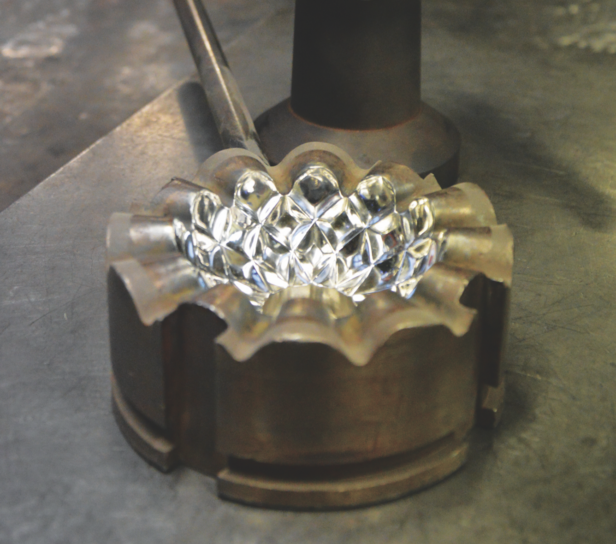
Glassmakers plunge heavy iron rods into the furnace and, once the rods are out of the fire, the glassmakers execute a wordless and precise choreography of blowing, cutting, trimming and molding as the piece takes shape before it is left to cool.
It requires acute precision, as every movement can alter the finished work, and the craftsmen must turn the rods while evaluating the result of their movements on the crystal. Each piece is blown by mouth and cut by hand.
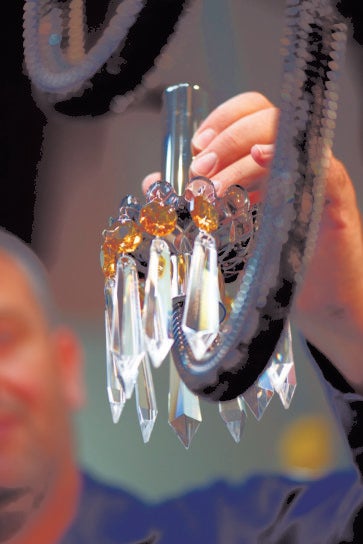
As the Arlequin has colored crystal, a multi-cover furnace is used. Each piece takes hours or even days to cool; cooling ensures the thermal stress is released so it is ready for decoration. The fully cooled pieces are sent to the factory’s cold workshop where cutting, engraving, gilding, embellishing and polishing take place.
Saint-Louis is known for intricate crystal-cutting techniques, and the cold workshop is where master cutters hold each piece up to a spinning grindstone and skillfully engrave them. The pieces are then sent to the lighting workshop, where assemblers thread and set each component on a complex metal structure.
Assembling a chandelier is a tremendous task: Each of the dozens, even hundreds, of pieces has a specific role. Bowls and balusters conceal the structure, while pears and pendants diffract the light in prisms.
The Arlequin chandelier is comprised of a baluster, a rounded ornament decorated with Venetian stripes that adorn the central column of the chandelier; a center ball that adds a focal point to the central shaft; a chandelier ball that hangs from the base of the chandelier; the cup that was initially a crucial wax collector but is now used decoratively in electric chandeliers; and a pendant that hangs from the cup to diffuse light.
The finished result is an incandescent work of art that, when it catches the light and the fragments dance across the surrounding surfaces, is a re-creation of the in-sync movements of the craftsmen. This piece was created as Saint-Louis wanted to modernize the classic chandelier by introducing colored crystal. Arlequin is named for Harlequin, the fabled Commedia dell’arte character defined by his multicolored, diamond-checked costume — a fitting inspiration considering the theatrics of creating the fixture.
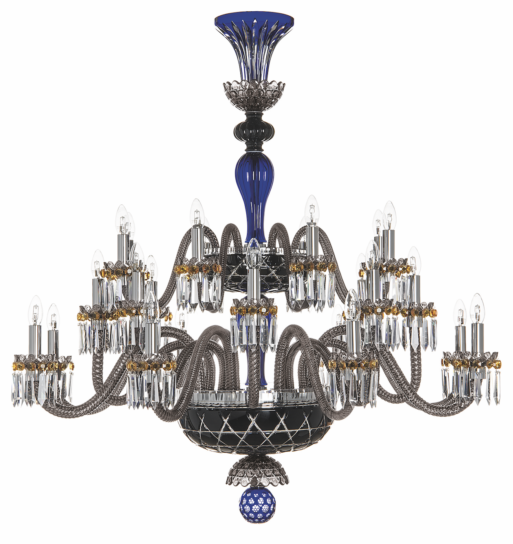
Price: $65,000
Contact: Saint-Louis in New York. Contact Dorothee Mathieux, showroom manager, dorothee.mathieux@ hermesofparis.com, +1 929 404 8954, saint-louis.com
Images: Benoît Teillet





